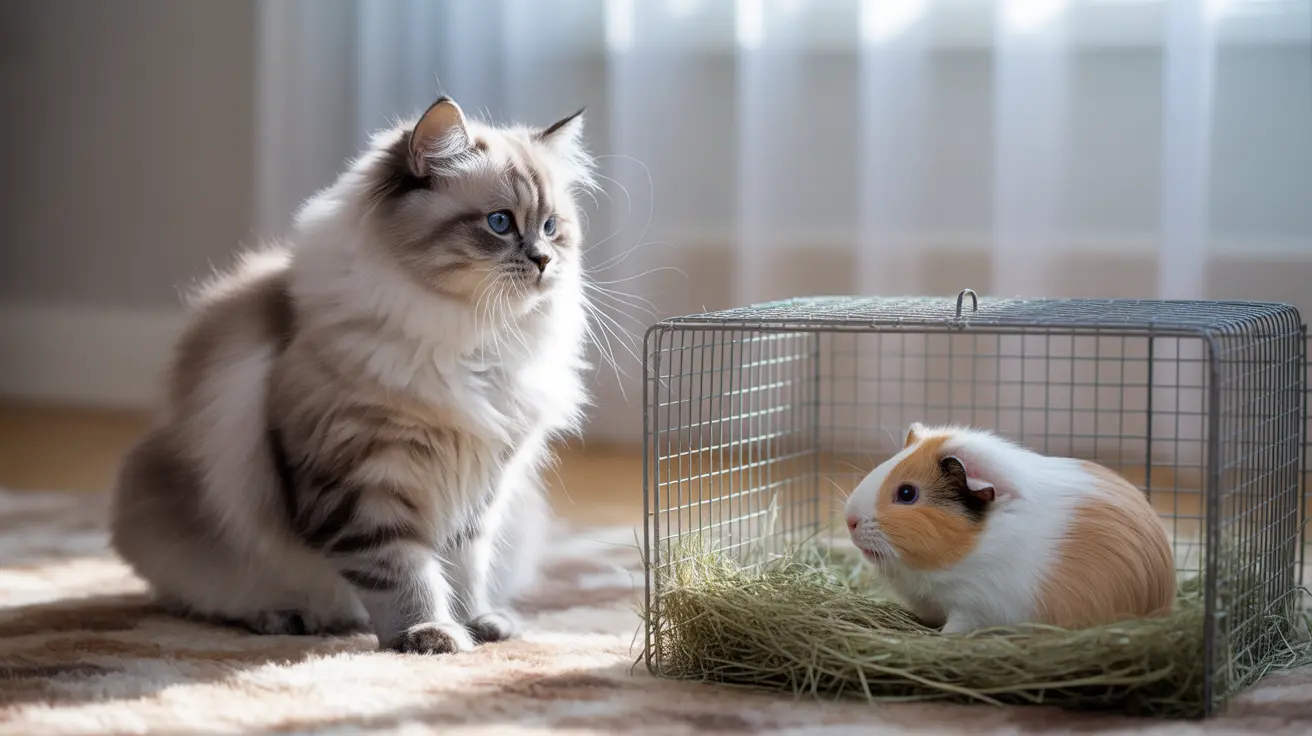If you're considering keeping both cats and guinea pigs as pets, you might be wondering about the safety implications. While cats don't typically eat guinea pigs, the natural predator-prey dynamic between these animals creates significant risks that every pet owner should understand.
In this comprehensive guide, we'll explore the complex relationship between cats and guinea pigs, examine the potential dangers, and provide expert advice on whether these two species can safely coexist in your home.
Understanding Natural Instincts and Predatory Behavior
Cats are natural predators with deeply ingrained hunting instincts, regardless of how well-fed or domesticated they may be. Even if your cat seems gentle, their predatory drive toward small animals like guinea pigs remains hardwired into their DNA. Research shows that over 75% of domestic cats display hunting behaviors when encountering smaller animals.
Guinea pigs, being prey animals, are particularly vulnerable to this dynamic. Their natural defense mechanisms - freezing or fleeing - aren't effective in a home environment and can actually trigger a cat's chase response.
The Real Dangers of Cat-Guinea Pig Interactions
While it's rare for domestic cats to actually eat guinea pigs, the threat they pose is very real. Cats can seriously injure or accidentally kill guinea pigs through:
- Predatory play behavior
- Swatting through cage bars
- Direct attacks during unsupervised moments
- Stress-induced health issues in guinea pigs
Even without physical contact, a cat's presence can cause severe psychological stress in guinea pigs, leading to:
- Appetite loss
- Digestive problems
- Weakened immune system
- Depression and anxiety
Creating Safe Living Arrangements
If you must keep both pets, implementing strict safety measures is crucial:
- House guinea pigs in a separate, closed room
- Use predator-proof enclosures with no gaps
- Never allow unsupervised interaction
- Maintain separate feeding and play areas
- Install secure locks on guinea pig housing
Remember that even the most careful arrangements still carry inherent risks. Many veterinarians recommend choosing between these pets rather than trying to house them together.
Signs of Stress in Guinea Pigs
Watch for these indicators that your guinea pig is experiencing cat-related stress:
- Reduced activity levels
- Decreased appetite
- Hiding more than usual
- Freezing in place
- Changes in bathroom habits
- Unusual aggression or timidity
Disease and Health Concerns
Beyond physical injury risks, cats can transmit various health problems to guinea pigs:
- Parasites (fleas, mites)
- Bacterial infections
- Fungal conditions like ringworm
- Stress-related illnesses
Frequently Asked Questions
Do cats actually eat guinea pigs or just chase them?
While cats rarely eat guinea pigs, they may seriously injure or kill them through predatory behavior. The primary risk comes from hunting instincts rather than hunger.
Can cats and guinea pigs safely live in the same house?
It's possible but extremely challenging and risky. Success requires strict separation protocols, predator-proof housing, and constant vigilance. Many experts advise against it.
How can I protect my guinea pig from a cat's predatory behavior?
Keep guinea pigs in a separate, closed room in secure, predator-proof housing. Never allow unsupervised interaction, and ensure all family members understand and follow safety protocols.
Why do guinea pigs get stressed around cats even without direct contact?
Guinea pigs can smell and hear predators nearby. As prey animals, they're naturally programmed to experience stress responses to predator presence, even without visual contact.
What signs show my cat is threatening my guinea pig and how should I act?
Watch for stalking behavior, intense staring, tail twitching, and crouching. If you notice these signs, immediately separate the animals and reinforce physical barriers between them.
Conclusion
While cats don't typically eat guinea pigs, the natural predator-prey relationship makes cohabitation dangerous. If you're considering both pets, carefully weigh the risks and challenges. The safest approach is usually to choose one species rather than attempting to house both together.






